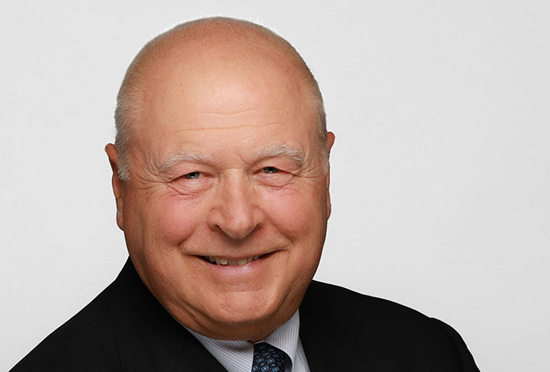The changing landscape of Europe’s equity derivatives market
Europes single stock futures and options markets have been traditionally dominated by local exchanges, but as competition increases, the landscape could be set to change across the continent, writes Jonathan Watkins.
Europes single stock futures and options markets have been traditionally local - if investors want to trade German equity derivatives they go to Eurex, for the UK NYSE Liffe has been the go-to and in Italy, participants use Borsa Italiana and so on.
 Other national venues in Warsaw, Spain and NYSE Euronext in the Netherlands have also had the lions share of domestic volumes without having to fend off competition.
Other national venues in Warsaw, Spain and NYSE Euronext in the Netherlands have also had the lions share of domestic volumes without having to fend off competition.
National monopolies
Compared to the US which has liberalised its market structure and has 12 exchanges, we have pretty much one for each market and a couple of initiatives, says Philippe Carré, global head of connectivity, SunGard's capital markets business.
But for the market to grow it cannot stay within national boundaries. These places have almost a monopoly on their national markets.
So the future has to be around competition so that you can trade one against the other, get competitive pricing from different venues and then you can get market makers and traders coming in and exploring the multi-listing opportunities.
As the equity derivatives space continues to grow, however, this future could soon become a reality. Incumbents are looking to increase their reach into neighbouring European markets, while smaller trading platforms are starting up to rival larger exchanges, sparking a new wave of competition.
Eurex lists the most actively traded European contracts, with volumes of 9.8m across single stock futures and options contracts in November. With a firm foothold in its local market, the German exchange is now looking to grow its market share in other continental equity options and single stock futures.
Brendan Bradley, head of innovation management at Eurex, says the exchange strategy is to move towards a pan-European offering, highlighting how the bourse has almost doubled its market share in French equity options.
That really is an indication that we have had liquidity on the screen and there has been a shift of liquidity from the off-screen players and I imagine that some of them are looking to benefit from cross-margin benefits on Eurex, he says.
On the Dutch side, we have seen
Bradley says Eurex also has a foothold in the Austrian markets. With the Austrian derivatives exchange effectively closing down we already had a share of about 85-90% but now we will have the ability to take on the index license there as well.
| We know there is some appetite for change in the markets," Nicolas Betrand, head of equity and derivatives markets at LSE Group. |
Challenging London
In London, Liffe holds a similar position to Eurexs in Germany, with volumes topping 6.6m during November. And the exchange has been adding contracts in recent months, including the much sought-after Royal Mail stock futures.
But now a new rival has emerged to challenge Liffes dominance, in the form of the recently restructured London Stock Exchange Derivatives Market.
LSE acquired the remaining 51% of Turquoise in September and now operates it as a Recognised Investment Exchange rather than an MTF as it was previously categorised.
At present, its equity derivatives products in London have only gained a fractional market share but the exchange has plans to expand its portfolio after gaining more freedom to launch new products since acquiring a 100% stake in Turquoise.
We are starting a venue owned fully by the London Stock Exchange Group and our plan is to leverage the most valuable assets of the exchange in terms of our presence on the core equity markets in London, said Nicolas Bertrand, head of equity and derivatives markets at LSE Group.
Since acquiring Turquoise and mapping out its plans for the derivatives market, LSE has set its sights on growing its derivatives unit.
Any product that you provide in the market needs to be liquid enough to gather interest and that is where by analysing specifically the UK equity derivatives space we believe there are some significant improvements we can bring to the market. added Bertrand.
We know there is some appetite for change in the markets. We are not going for a splash; we are thinking about the market and going step-by-step.
Infrastructure barriers
Across the Atlantic, the US equity options market operates around a single clearing house, the Options Clearing Corporation, which has placed 12 exchanges in a shoot-out for market share across the country.
| It would be much nicer, simpler and much more cost efficient to have a single clearing house across Europe but I dont think any of us believe in Santa Claus anymore, Philippe Carré, global head of connectivity, SunGard. |
Opening up a single clearing pool in one clearing house would increase competition for execution venues, as is the case in the US. But with the number of clearing houses currently operating in Europe, it is unlikely that CME, ICE or Eurex would ever agree to this.
Opinions may be divided on whether this model will be replicated in Europe, but the truth is the continent is far from a shift to a single clearing house.
It would be much nicer, simpler and much more cost efficient to have a single clearing house across Europe but I dont think any of us believe in Santa Claus anymore, added Carré. We all know this is not anywhere close to happening yet.
In the Netherlands, one platform championing the idea of a single clearing house model is multilateral trading facility, The Order Machine (TOM).
Headed by CEO Willem Meijer, the platform says it has built a 30% market share in Dutch equity options against incumbent exchange NYSE Euronext, which previously dominated the Dutch market.
If you have it like the OCC model in the US, then you will get real competition between exchanges and it helps investors because the trades can be cleared through different exchanges in the same pool and that is beneficial for the market, says Meijer. It will be good for the market.
.Jpeg)
There are two ways to do this. Find a country where a company like
The other way is to offer liquid products traded both by retail and institutional investors, such as large series on equity options or liquid stocks which options are written on. I see that happening next year and we are going to look at every country in Europe and take an interest in stock that is attractive for investors to trade on, says Meijer.
Growing competition
TOMs challenge to Euronexts established presence in the Netherlands is a sign of the growing competition within Europes equity options market. Along with LSEs attempts in the UK and Eurexs expansion throughout the continent, individual national exchanges dominance over their domestic market is coming under threat.
The landscape of the market could also set to be changed if the proposed financial transactions tax comes into force in the 11 European Union countries supporting the levy.
While market participants have been lobbying against the 0.01% charge on derivatives transactions from the outset, the European Commission looks committed to taxation on financial instruments.
The tax has already been rolled out in Italy, which could explain why Eurexs volumes have risen in Italian contracts.
The lack of consistency across Europe could prompt some trading activity to exit FTT countries.
Its a burden to liquidity and a step back in the markets, says Meijer. It has to be implemented in every country in Europe or people will escape to FTT-neutral territories where the flow will end up and we will lose it to another country.
Dont expect that if FTT is introduced in Netherlands or Germany that the business will reluctantly stay here and pay the tax. The business will flow to the mechanism where the tax is avoided.
The European market for equities has been fiercely competitive since Mifid I and the proliferation of trading platforms across the continent. And with Bats-Chi X, the most successful market that emerged from Mifid, is expected to move into derivatives in Europe imminently (although this has been the expectation for some time), more execution venues will seek to emulate the success of TOM, possible aided by a pro-competitive mandate in Mifid II.
Another consideration will be the strategy of Euronext following its separation from NYSE Liffe. It will need to fight back and meet the challenge it faces across multiple markets for the local equity derivative markets. 2014 is shaping up to be another year of shifting liquidity in the equity derivatives market.
Found this useful?
Take a complimentary trial of the FOW Marketing Intelligence Platform – the comprehensive source of news and analysis across the buy- and sell- side.
Gain access to:
- A single source of in-depth news, insight and analysis across Asset Management, Securities Finance, Custody, Fund Services and Derivatives
- Our interactive database, optimized to enable you to summarise data and build graphs outlining market activity
- Exclusive whitepapers, supplements and industry analysis curated and published by Futures & Options World
- Breaking news, daily and weekly alerts on the markets most relevant to you



